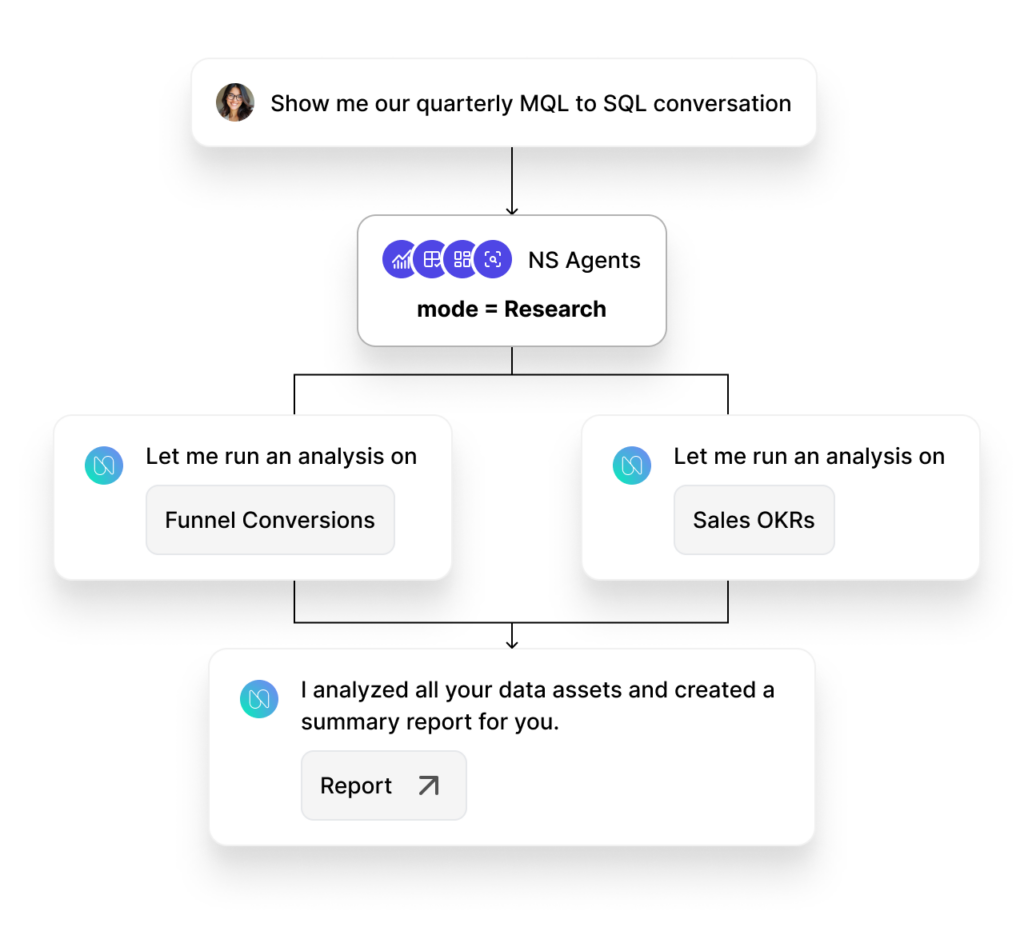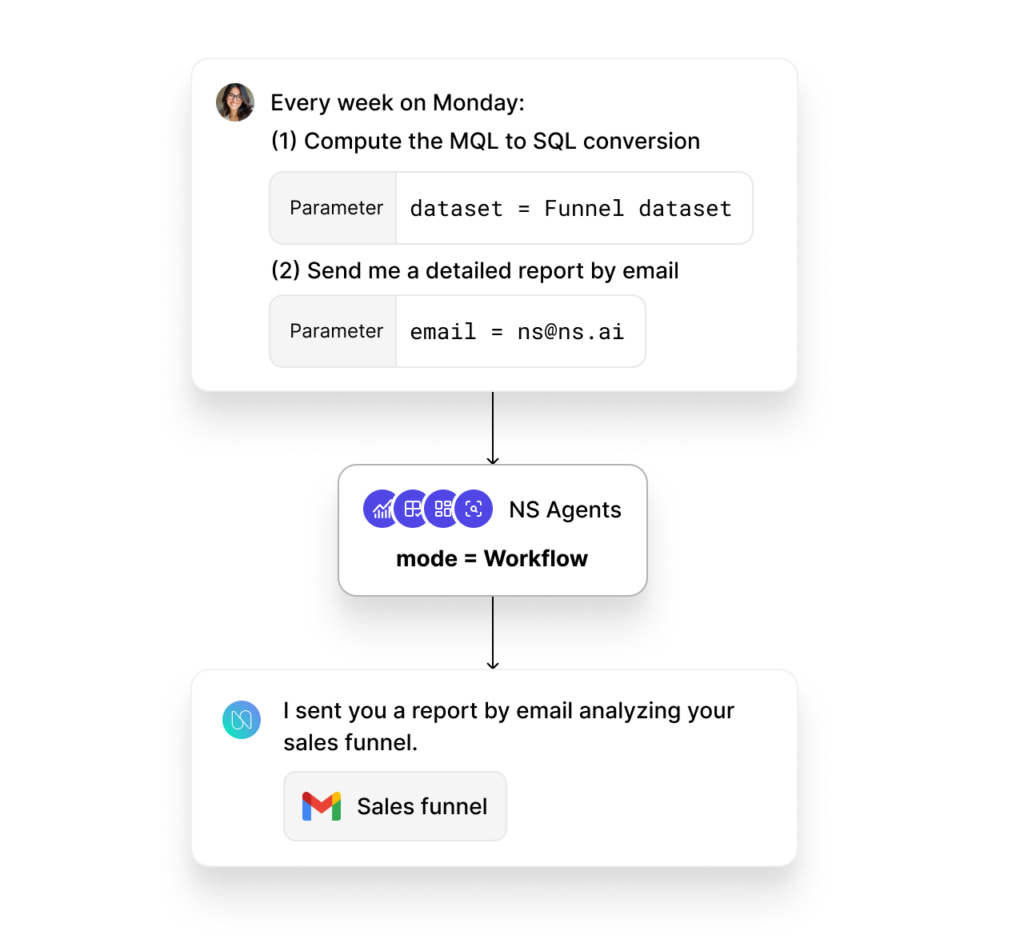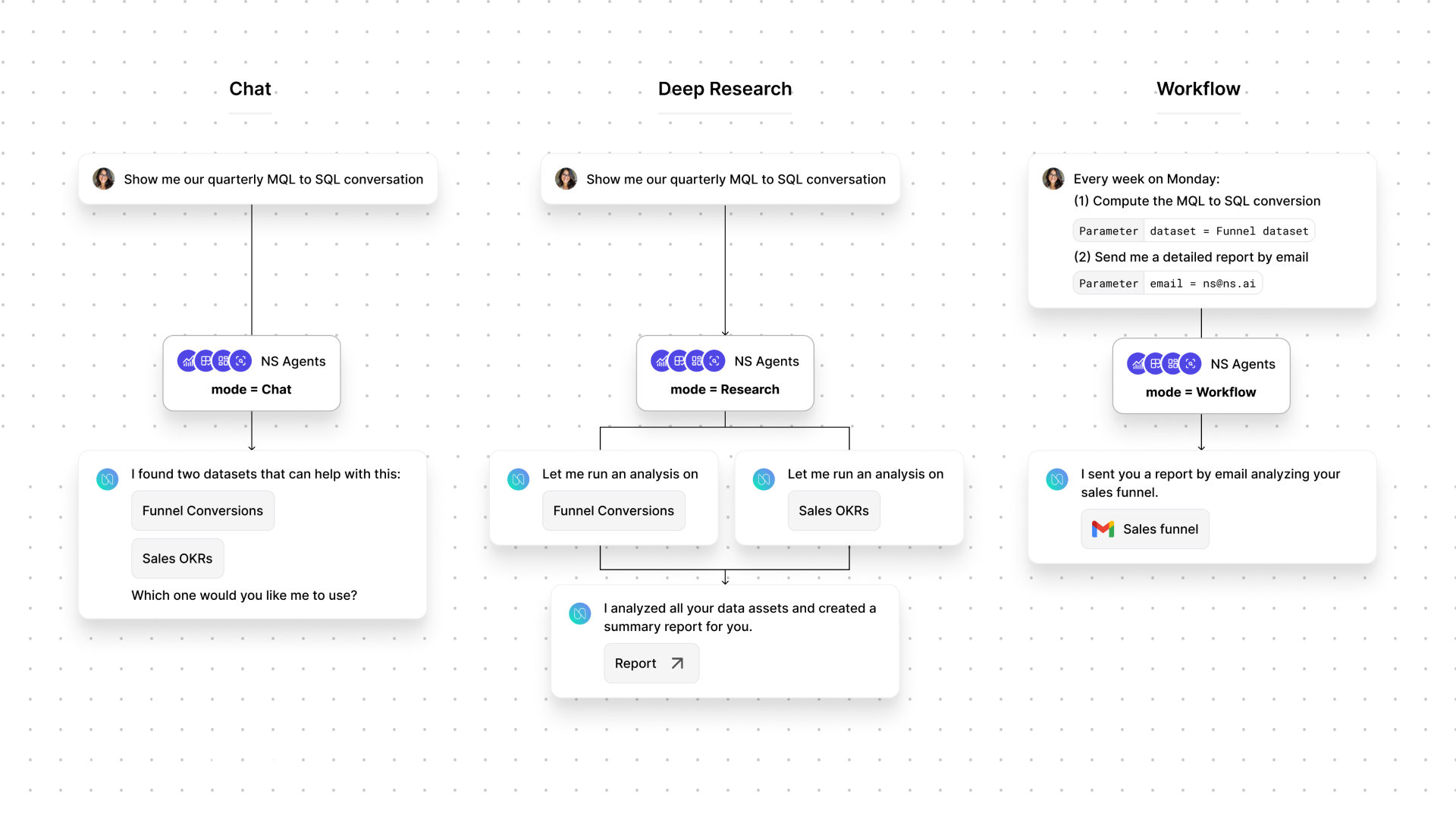AI agents are reshaping industries worldwide. Over the past year, excitement has grown around agent systems, with product builders incorporating AI assistants in their products, adding workflow automation capabilities to automate repetitive tasks, and even launching fully autonomous systems. In particular, three popular mode of interactions with AI agents have emerged, including:
- Chat mode – where a user is directly interacting with AI agents via natural language interfaces. This includes products like Operator from OpenAI, which are designed for conversational, assistant-style interactions.
- Research mode – where agents autonomously perform complex research tasks with minimal human oversight. Examples include the Deep Research mode introduced by various model providers such as OpenAI, Perplexity or Gemini.
- Workflow mode – where agents execute a predefined or dynamically generated workflow entirely autonomously, which enables companies to deploy production-ready, goal-driven agents to run internal workflows without human intervention.
In this post, we dissect these three modes of interactions with AI agents, outline their best-use scenarios, and explain how Numbers Station’s agent systems empower businesses to choose the ideal mode for their needs.
Understanding the Three Agent Modes
1. Chat Mode: Elevating Interactive Experiences
Chat mode is the most widely used approach for building agent systems. Historically, chat-based systems existed even before the current wave of large language models (LLMs); users would simply interact with an AI assistant that answered their queries. In early implementations—such as the original ChatGPT experience—the interaction was limited to text outputs based solely on pre-trained knowledge, without decision-making or tool-calling capabilities. Today’s chat-based systems have evolved; they are now agentic in nature, meaning that LLMs are enhanced with decision-making abilities and can call on various tools. Although it appears that users are conversing with a single assistant, behind the scenes, multiple agents collaborate to fulfill the request (for example, ChatGPT can now browse the web depending on the task.
Example: Imagine a scenario where a data analyst is interacting with agents in a chat-based experience and asks: “Show me our MQL to SQL conversion rates by quarter”. Let’s say the agent decides to first locates datasets that may answer the question and replies: “I found two datasets that can help with sales funnel analysis, (1) Funnel Conversion Metrics and (2) Sales OKRs, which one would you like me to use”? In this dynamic exchange, the agent relies on user guidance by asking a clarification question to ensure precise, context-aware results.

Key Advantages:
- High Interactivity: Users guide the conversation, making it ideal for queries that benefit from iterative clarification.
- Precision: Direct feedback loops ensure responses are aligned with specific user needs.
2. Research Mode: Enabling Semi-Autonomous Exploration
Research mode marks a paradigm shift from traditional interactive chat. Here, AI agents propose a high-level plan and, once approved, execute a comprehensive research task autonomously. Major AI providers are now offering dedicated research assistants (e.g., Gemini Research, OpenAI DeepResearch, Grocq3) that embody this approach.
Example: Using the previous sales funnel scenario, instead of prompting the user for dataset selection, the agent explores both datasets and synthesizes insights from each.

Unlike chat mode, where the agent traverses the decision tree of operations one step at a time, research mode takes an exploratory approach, evaluating all possibilities before returning a summarized answer. In practice, the level of exploration that an agent can do with depth and breadth parameters. Research mode is especially suited for exploratory research tasks, though it may incur longer latency as research tasks can take several minutes compared to the near-instant responses of chat mode.
Key Advantages:
- Hands-Off Execution: Ideal for exploratory tasks where users might not be aware of all available data, as the agent conducts comprehensive research on their behalf.
- Depth and Breadth: The agent explores multiple data sources and possibilities—akin to traversing a decision tree via both depth-first and breadth-first search strategies—before synthesizing insights.
Note: Research mode has primarily been used for read-only tasks—where the agent retrieves and summarizes information—but could theoretically be extended to operations that modify data. However, such implementations must be managed carefully to avoid unintended modifications, such as inserting or deleting database rows without prior confirmation.
3. Workflow Mode: Automating Repetitive Tasks
Workflow mode is a fully autonomous approach where agents execute predefined tasks without human intervention. Unlike Chat or Research modes, workflows require precise, upfront configurations by a human to ensure accuracy in repetitive tasks. This design paradigm is better suited for repeated tasks that require running the same sequence of steps.
Key Advantages:
- Determinism: Every step is pre-configured, reducing the potential for error.
- Efficiency: Automating repetitive tasks—such as generating weekly reports or monitoring key metrics—saves valuable time and resources.
Example: Think for instance about an extension of the previous scenario where an analyst wants to get a week over week report on MQL to SQL conversion by state. This workflow can be automated by breaking it down into three concrete steps:
- run a query over the funnel dataset
- generate a chart
- send me a report analyzing the trend by email.

In particular, each step needs to be configured with specific parameters to make sure the workflow can execute successfully. For instance, the dataset to use in step (1) has to be picked upfront by the user. To bring even more determinism into workflows, it is not always needed to use agents for executing all of the steps. For instance, step (1) and (2) might not even require an agent to run since the query or code to execute are the same every week. Step (3) is a great use of agentic workflows since trends will change every week and getting a concise email summary can save a significant amount of time for analysts that run these workflows weekly.
Workflows are a very powerful paradigm to automate repetitive tasks. Combined with traditional automation systems (e.g. RPA), agentic workflows have the potential to save hours of manual work for repeated tasks that occur in organizations.
How Numbers Station Delivers these agentic experiences in your data products
At Numbers Station, our advanced agent systems are powered by a master planner agent that orchestrates all expert agents seamlessly. In addition to controlling which agents take part in a flow, users can also control whether they want to build chat, workflow, or research experiences in their product, all via the API. Whether you need real-time interactive assistance, comprehensive research automation, or robust workflow execution, Numbers Station agents are designed to meet your enterprise needs.
If you’re interested in exploring the power of AI agentic, request a demo today and join the growing community of data app builders harnessing the future of AI.
